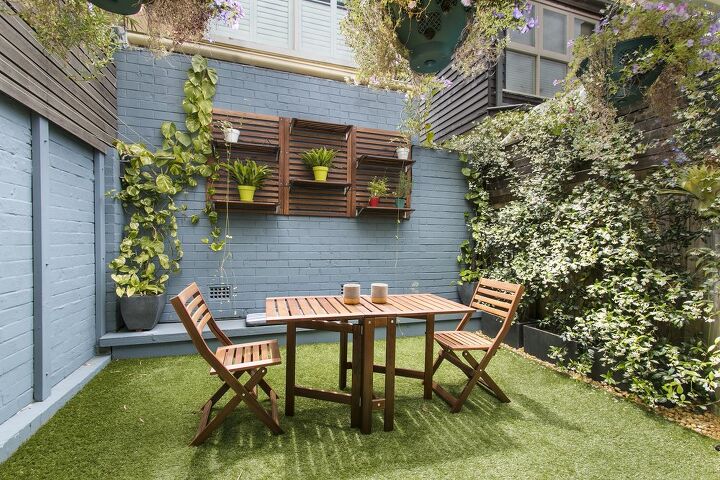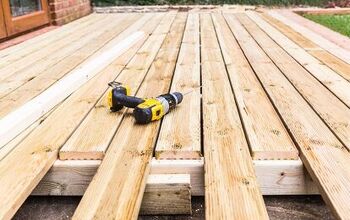Can You Use Non-Pressure Treated Wood Outside?

When revamping your home by adding outdoor living space, you’ll need to choose the best materials for the job. In the realm of heavy-duty lumber, pressure-treated wood is standard for decks, patios, and garden spaces.
This special building material is treated with a preservative that helps it last despite the elements and heavy use. Most outdoor structures use pressure-treated wood to help them keep away pests, mold, and water damage.
You can use non-pressure treated wood outside, but you’ll need to take steps to ensure that they last. These preventative actions include applying sealants, weatherproof paints, and outdoor-friendly stains. Non-pressure treated wood may not last as long otherwise, and you can end up replacing foundations sooner than expected. For indoor structures and furniture, non-treated wood is recommended.
Before you decide whether to use non-pressure treated wood or pressure-treated wood, let’s review the specifics of each.
Do You Need to Hire a Framing Contractor?
Get free, zero-commitment quotes from pro contractors near you.

What Is Pressure-Treated Wood?
Like its name suggests, pressure-treated wood is lumber that’s been treated with various sealants and substances. Non-pressure treated wood has not received special treatments and remains “natural.”
These treatments make the wood more resistant to risks like water damage, rot, mold, and pest infestations.
What Is Pressure Treatment?
Pressure treatment begins with natural lumber. A machine injects chemicals into the wood using a pressurized system, removing as much air as possible from the wood.
The type of chemicals inserted and the amount of pressure used vary. The wood is left to dry before being sent out.
Chemicals Used
- Alkaline Copper Quaternary (ACQ): This chemical helps wood resist UV light damage. It’s also helpful against pests and mold.
- Micronized Copper Azole (MCA) and Copper Azole (CA): These preservatives are used for their water resistance and pest-deterrent properties.
- Chromated Copper Arsenate (CCA): This mix is a heavy-duty solution that’s approved for marine structures.
Common Uses For Pressure Treated Wood
- Deck Fences and Flooring
- Retaining Walls
- Garden Beds
- Any Structure That Touches Concrete or Masonry
Common Problems With Using Non-Pressure Treated Wood Outside
There are common risks you take when using any kind of lumber outdoors. What happens if you use non-treated wood outside?
Sunlight Damage
Ultraviolet rays cause damage not just to the wood but to any paints and stains on your lumber. Excess heat can cause wood to expand and warp.
Water Damage
When water makes contact with your lumber, this can weaken glues and cause the wood to fall apart. Mold can grow or rot can spread.
Pest or Mold Damage
Termites and ants are common invaders you’ll find outdoors. Mold is also prevalent.
Cracks
Various conditions can cause lumber to crack. Sunlight, extreme cold, and excess moisture are a few culprits.
Pros and Cons of Using Pressure-Treated Wood
Pressure Treated Wood Pros
- Lifespan: Pressure-treated wood can last up to 40 years outdoors. When used as deck flooring, though, its lifespan may decrease to 10 years.
- Water Damage Resistance: One of the main reasons for using pressure-treated wood is its water resistance. Wood treatment varies in potency, from basic to marine-grade. This rating affects how well it stands up against weather and use.
- Relatively Low Cost: Pressure-treated lumber costs about $15 to 25$ per square foot. The cost depends on the type of wood used and the treatment applied.
Pressure-Treated Wood Cons
- Not As Durable Against Sunlight: Pressure-treated wood is sensitive under harsh sunlight. You may need to hose down your deck during warmer months to minimize sun damage. Unprotected wood can fade and/or crack.
- Treated With Chemicals: This is why non-pressure treated wood is recommended for surfaces you may touch like furniture or indoor flooring.
- Warping Is Common: The chemicals in pressure-treated wood contribute moisture to the wood. This can lead to warping since the drying time is long — at least 72 hours to six months. Combat this issue by letting the pieces dry before sealing.
Types of Pressure-Treated Wood
The American Wood Protection Association (AWPA) categorizes pressure-treated wood into five major categories.
UC4A
This category is used for foundations or structures that make contact with water. It’s commonly used for decks, fences, and posts. It’s compatible with average weather conditions.
UC4B
This category is used for critical structures that make contact with fresh water. Common applications include wood foundations, utility poles, and building poles. It’s suitable for any weather.
UC4C
This category is deemed ideal for structural components that make contact with the ground or freshwater. It’s used for land piling, foundations, and utility poles. It’s ideal for areas prone to decay.
UC5B
This category is ideal for marine environments with saltwater. It’s typically used for bulkheads, piling, and bracing.
UC5C
This is the most durable category which is suited for continuous saltwater exposure. It’s ideal for bulkheads, bracing, and piling.
Do You Need to Hire a Framing Contractor?
Get free, zero-commitment quotes from pro contractors near you.

Related Questions
How do I seal non-pressure treated wood for outdoor living?
Step 1: Test the waters.Sprinkle water over your lumber to see if it’s dry. If absorbed within 10 minutes, the lumber is ready for staining or painting.Step 2: Wash the lumber.If your deck has been sitting out, remove mildew, dirt, and other debris. Repeat Step 1.Step 3: Test a patch.Apply a small amount of stain to an area to get a preview of its effect.Step 4: Stain the whole floor/structure.Follow your stain manufacturer’s directions for proper application. Choose UV-protective formulas for the best results.
Can you build a deck with non-pressure treated wood?
You can build a backyard deck with non-pressure treated wood. You’ll need to seal it and treat it yourself to extend its life, however.
When do I use non-pressure treated lumber?
Use non-pressure treated lumber for flooring and furniture indoors. You and your family are likely to touch these surfaces, and treated lumber may be unsafe if used indoors. This especially holds true for food-contact surfaces.

We are a team of passionate homeowners, home improvement pros, and DIY enthusiasts who enjoy sharing home improvement, housekeeping, decorating, and more with other homeowners! Whether you're looking for a step-by-step guide on fixing an appliance or the cost of installing a fence, we've here to help.
More by Upgraded Home Team



























